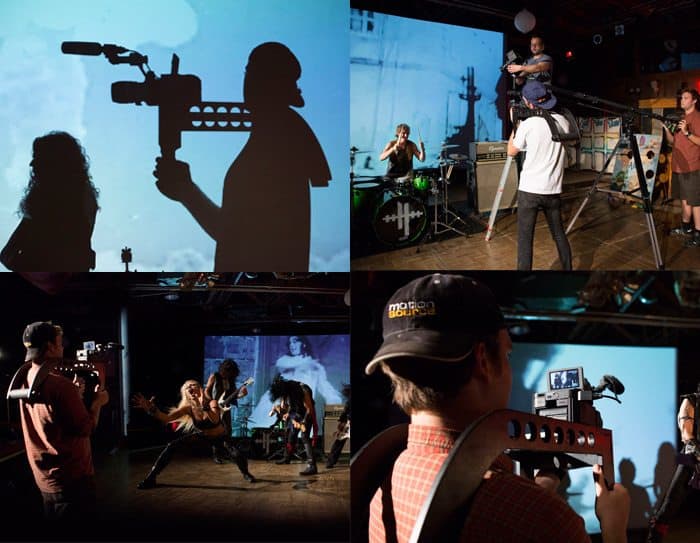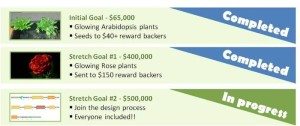In November of 2013 my company, Motion Source Video Production, ran a Kickstarter campaign for a shoulder rig for video cameras. The campaign was very successful, with final totals leaving us at 376% funded beyond our original funding goal. In preparation for the campaign my team and I surfed the web searching for articles containing advice on running a crowd funding campaign. We found a host of articles and blogs that were focused on that idea; however we found that most of the advice overlapped from one source to another.

We used most of the advice, and it worked out well. Along the way we learned a lot and now that our campaign is over here are the 9 things we wish someone would have shared with us before we started.
Plan and Submit for Approval Early
You have to set up an account through Amazon Payments; this is how backers will send you funds. Getting this account set up and certified can sometimes be a real hassle. Just to be safe plan for 7-10 days to get your account all set-up and certified.
Kickstarter manually approves all projects before they go live. Look around at current projects to make sure you have covered all the sections that they have; such as idea origination, team members list, or how your team got to where they are with the project now.
Have Stretch Goals Ready
 Stretch Goals are the plans you have for the extra money if the project becomes over funded. An example of a stretch goal could be offering more color options if a project hits X number of dollars. Now you don’t have to release your stretch goals at the launch of your campaign, but have a plan for stretch goals in case your funding hits 100% quickly.
Stretch Goals are the plans you have for the extra money if the project becomes over funded. An example of a stretch goal could be offering more color options if a project hits X number of dollars. Now you don’t have to release your stretch goals at the launch of your campaign, but have a plan for stretch goals in case your funding hits 100% quickly.
Plan for International Shipping
After looking into buying boxes for shipping our rig we found that the USPS will supply you with boxes for free if we go with their Flat Rate shipping option. This worked out well for our price point and saved us from buying boxes. However, this option was quite expensive for shipping outside the US; to the tune of $80. We considered not offering the rig outside the USA but then felt some people may want the rig even if they had to pay the high cost of shipping. By offering it worldwide we’d get even more exposure and we were right! We did get orders, but then there was a downside when people started to get angry that the shipping cost more than the rig itself, it did look a little awkward.
Track Where your Early Backers Come From
Once your campaign goes live you will have access to the “Dashboard,” which is a place on Kickstarter to track statistics about your campaign: video views, funding totals, funding source, etc. One unique feature is the “Source of Referrer” section, which tells you from what source your backer has come from. So if a backer saw a link to your project on Facebook and clicked on it, you would know they came from Facebook. This will help you determine which sources are helping your project and which sources you need to promote to more.
Note: It doesn’t tell you directly which backer came from which source, but you can keep track of that in real time if you wish by looking to see which category changed every time you get a new backer.
Find out Who your Early Backers Are
 It’s important to not only find out where your backers came from, but also who your early backers are. When you get a new backer, before you message them thanking them for their support, do a little quick research to find out who that person is. This person my run a blog about the industry your campaign is in, or they may be a working professional in the field. Find out who they are, and if they are someone with “pull,” kindly ask them if they could help promote your campaign. You can research most people in under a minute. Start by clicking on their name on Kickstarter. This will take you to their profile page which will sometimes include their personal or professional website listed or sometimes a city and state. Your search may end there, but don’t forget, when in doubt Google the person with everything you know about them. If you can’t find out anything about them, at a minimum ask every person “Can you help by sharing this campaign with a few friends?”
It’s important to not only find out where your backers came from, but also who your early backers are. When you get a new backer, before you message them thanking them for their support, do a little quick research to find out who that person is. This person my run a blog about the industry your campaign is in, or they may be a working professional in the field. Find out who they are, and if they are someone with “pull,” kindly ask them if they could help promote your campaign. You can research most people in under a minute. Start by clicking on their name on Kickstarter. This will take you to their profile page which will sometimes include their personal or professional website listed or sometimes a city and state. Your search may end there, but don’t forget, when in doubt Google the person with everything you know about them. If you can’t find out anything about them, at a minimum ask every person “Can you help by sharing this campaign with a few friends?”
Create a “Give Back” Reward
When creating reward levels I would suggest a “Give Back” option: a way for backers to donate the product to someone who can use it. Our product was a camera shoulder rig, so we created an option for backers to donate a shoulder rig to a film school at a cost lower than buying one for themselves. Reasons for doing this may include helping people in need of your product who can’t afford one, or giving someone who likes your product, but has no use for it themselves, an option to back the campaign. However, I found that a great reason for including a “Give Back” option is when trying to promote the page you can tell promoters (journalists, bloggers, etc.) about this option. They tend to be more receptive when they learn they can help others by promoting it. It’s a win-win-win situation.
Think about “Engagement” What will keep people on the page?
A lot of articles will suggest you include a profile video, but here are the facts right from Kickstarter’s blog.
“If you’re like us, the first thing you do when visiting a project page is click play”
“A video is by far the best way to get a feel for the emotions, motivations, and character of a project. It’s a demonstration of effort and a good predicator of success. Projects with videos succeed at a much higher rate than those without (50% vs. 30%).”
Note: Don’t forget about video length. Our video was about 6 minutes long and the final statistics showed that when someone clicked on the video about 40% watched it in full. If you want high rates of full views, you might consider making your video short.
Plan for a Delay on the Backend
When you are planning your campaign you may think “yeah, it will only take us 30 days to produce and ship all the items once the Kickstarter is over.” Don’t buy into it. You never know what will occur that could delay the process but don’t be surprised when something does. For instance, you could get so many orders that your original production plan cannot handle that in 30 days; or don’t forget that it could take 2-3 weeks from when the campaign ends until you get the funds in hand to start production.
Sell to Customers who are Late to The Party
You want to make sure that your project has the ability to raise more funds even after the campaign is over. Plan ahead on how you will do this. For instance you can have a designated page on your website to accept orders on, starting the first day after the Kickstarter campaign ends.
Note: On the last day of your campaign, before it ends, change the top section of the description block with information regarding where “backers who came late to the party” can go to buy your project. Your campaign will stay posted on Kickstarter forever, and you need an easy way for people to find you, after the campaign is over. The most important part is that you change the page before the campaign ends. Kickstarter does not allow you to make changes after the campaign is over. At a minimum change the URL in your bio section.
 John Scaletta is the co-owner of Motion Source, a video production company based in Chicago. For the last ten years Motion Source has primarily been a video production company, until now. About a year ago the team at Motion Source sparked the idea of creating affordable film gear for independent filmmakers. Those ideas lead to 9 months of design developments and eventually a successful birth on Kickstarter.
John Scaletta is the co-owner of Motion Source, a video production company based in Chicago. For the last ten years Motion Source has primarily been a video production company, until now. About a year ago the team at Motion Source sparked the idea of creating affordable film gear for independent filmmakers. Those ideas lead to 9 months of design developments and eventually a successful birth on Kickstarter.

